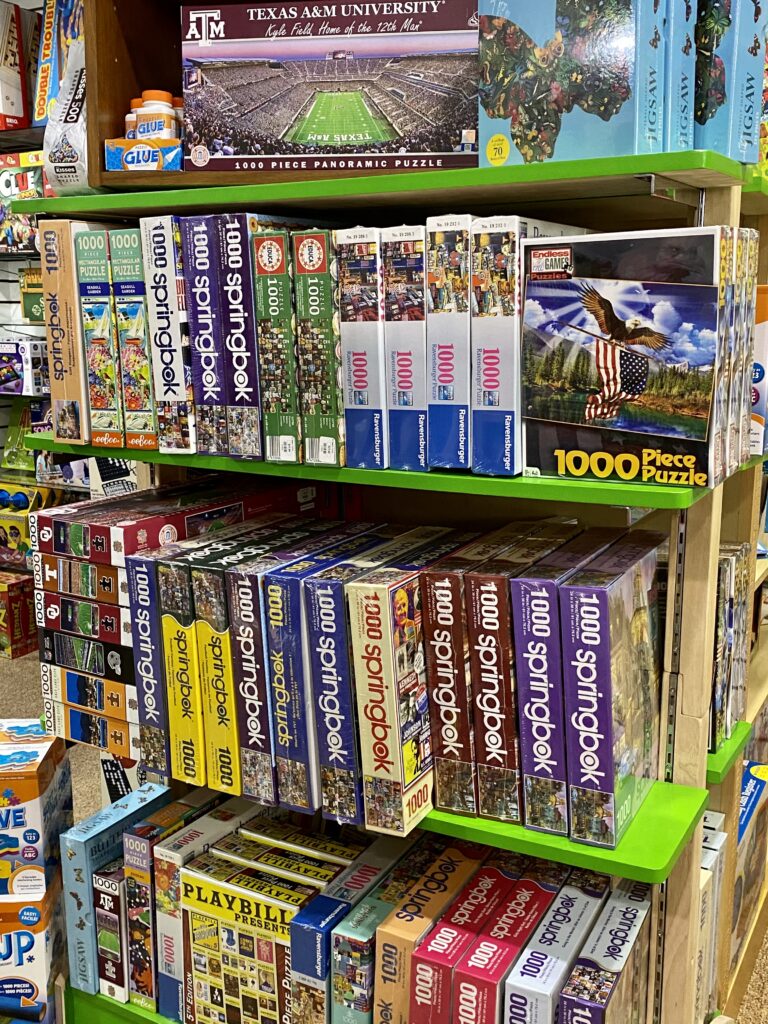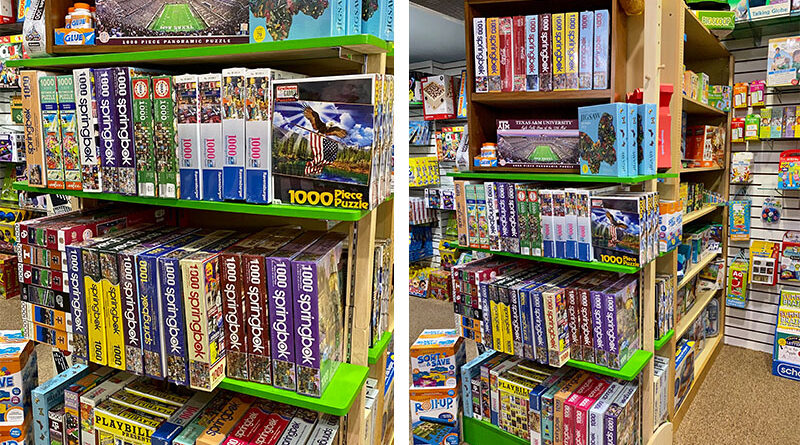The Pandemic’s Missing Piece…
Jigsaw puzzles provided ‘sense of purpose, skill, and conversation’ this past year
The time spent homebound with our families during the pandemic gave us an unexpected puzzle to solve: a newfound love of jigsaws.
And no one was more surprised than owners of toy stores and bookshops.
Pam May, owner of Toys Unique in Inwood Village, saw the regular inventory of puzzles, including everything from 1,500-pieces to toddler floor puzzles, evaporate.
“As soon as we got shut down, we were getting calls from people saying that they needed something to do,” she said. “Vendors were out of stock, and there were waiting lists. I’ve never ordered so many in my life. We were carrying between 50 and 60 different kinds. People would take what they could get. It was a frenzy.”
If you love jigsaws, then you may be a dissectologist – before and during the 19th century, jigsaw puzzles were called “dissected maps.”
I wonder if this might be one of the things that continues to bring people together… It’s better than any computer game.
Dr. Sandra Chapman
The most common strategy used by puzzlers is to construct the edges first, then sort the remaining pieces by color. The average 1,000-piece jigsaw takes three people 10 hours to complete.
The most difficult jigsaw puzzle is considered to be the 500-piece, double-sided image of penguins by Royce McClure. The reverse is rotated 90 degrees and die cut from both sides to make front and back indistinguishable. The Guinness World Records rates the biggest jigsaw puzzle as the 40,000-plus pieces Memorable Disney Moments.
Londoner John Spilsbury is credited with creating the multi-piece challenges in 1760 using a marquetry saw. The jigsaw became associated with the puzzle in about 1880 when fretsaws became the tool of choice for cutting shapes.
Challenge and fun aside, there are health advantages to the activity. Experts say assembling the puzzles exercises both the left and right sides of the brain. They’re also proven to relieve stress and decrease anxiety.

According to Dr. Sandra Chapman, founder and chief executive of the Center for Brain Health in Dallas, “Jigsaws are good for you … It’s rare that you have a situation that causes you to concentrate on minute detail but requires reasoning to see how it fits in the big picture.”
In addition to puzzles available in every conceivable subject matter, they can also be customized to feature personal photographs, maps, and even newspaper front pages. There are various shapes – oblong, square, round, with pieces in the shapes of states, countries, plants, animals, or clouds. There are clear acrylic, gradient rainbow, and 3-D puzzles.
Of course, 1,000 puzzle pieces on the dining room table can prove problematic at dinner. However, there are roll-up mats and puzzle holders that allow for the pieces’ removal without incident. Or a trusty tablecloth draped over your masterpiece will do.
The rebirth of the puzzle’s popularity during the pandemic may have been just what the doctor ordered.
“The puzzles give us sense of purpose, skill, and conversation,” Dr. Chapman said. “We’ll see if after the pandemic is over if that continues. I wonder if this might be one of the things that continues to bring people together … It’s better than any computer game.”

For nearly 40 years, People Newspapers has worked tirelessly to tell the stories—good, bad, and sublime—of our neighbors in the Park Cities and Preston Hollow. To support our efforts, please contact advertise@peoplenewspapers.comfor advertising opportunities. Please also consider sharing this story with your friends and social media followers.









